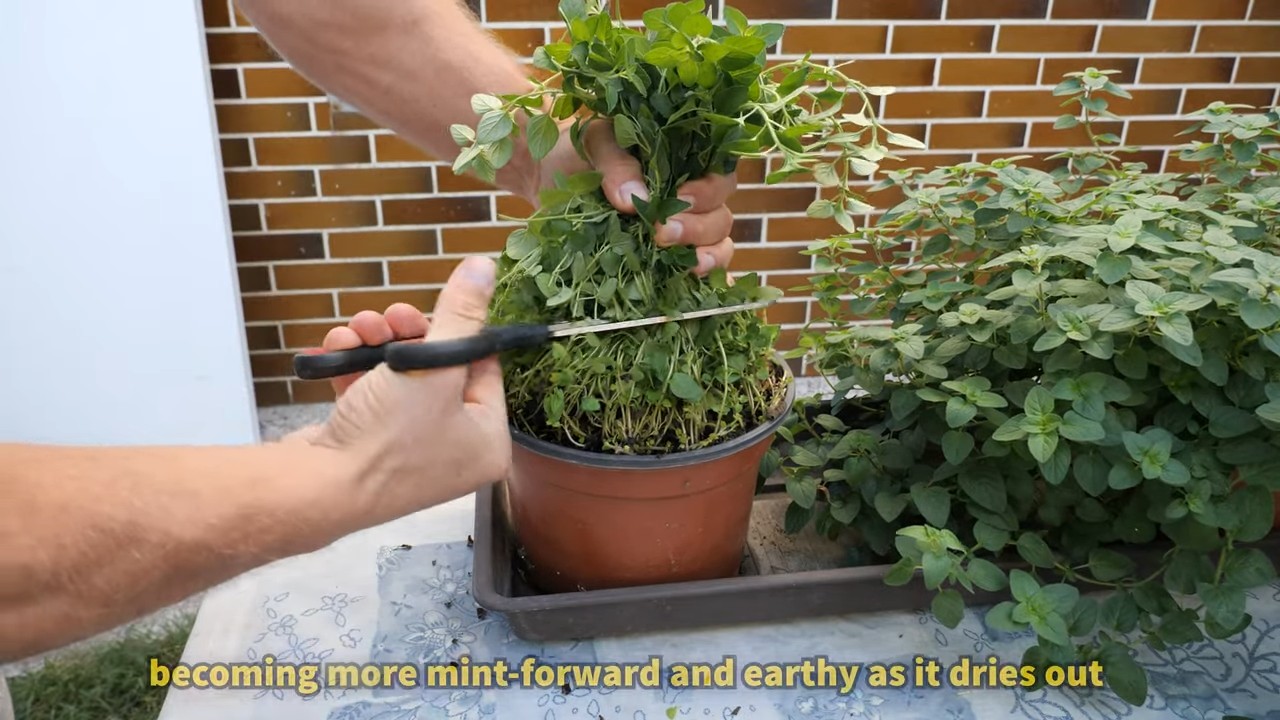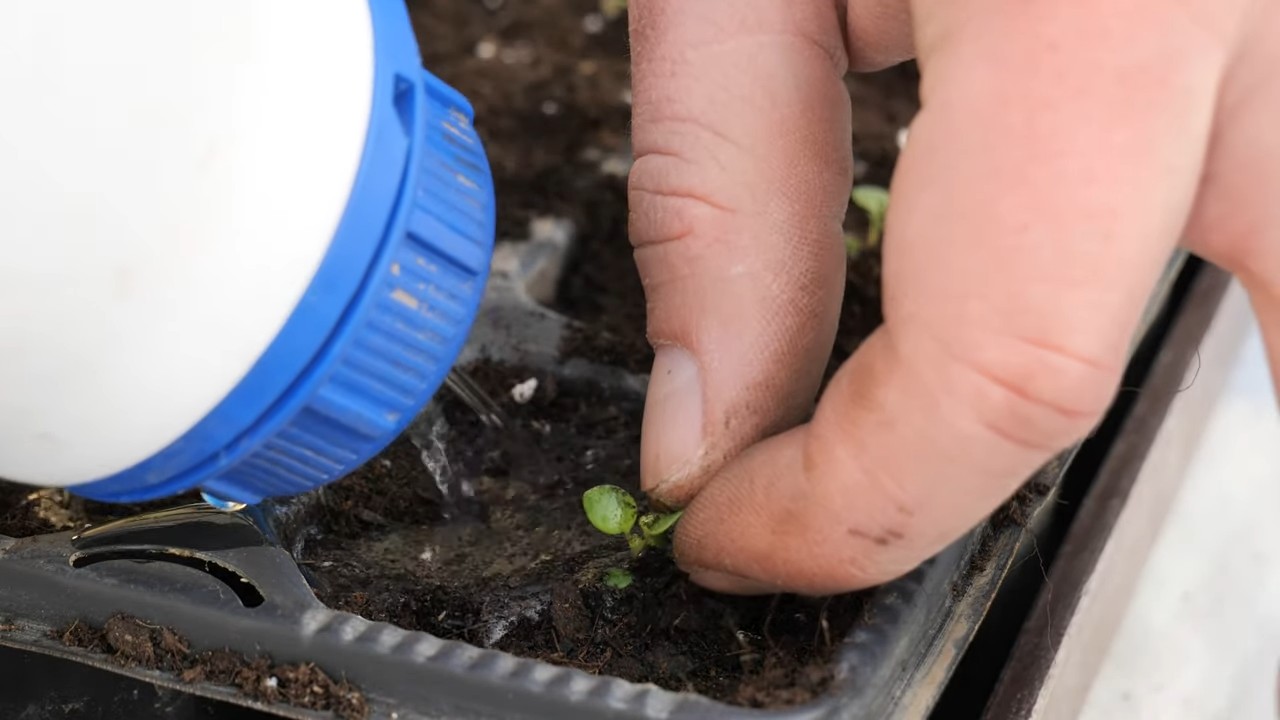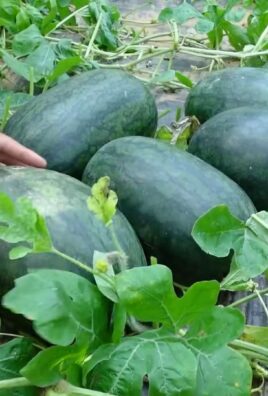Growing Indoor Oregano can be incredibly rewarding, bringing the fresh, vibrant flavors of the Mediterranean right into your kitchen! Have you ever been mid-recipe, only to realize you’re out of fresh oregano? It’s a culinary crisis we’ve all faced! But what if I told you that you could banish those moments forever with a simple, satisfying DIY project?
Oregano, with its rich history dating back to ancient Greece and Rome, wasn’t just a culinary herb; it was a symbol of joy and well-being. The Greeks even believed it could ward off evil spirits! Today, while we might not be battling evil spirits with oregano, its culinary importance remains undeniable. From pizzas and pastas to grilled meats and vibrant salads, oregano adds a distinctive, peppery zest that elevates countless dishes.
That’s why learning how to grow your own oregano indoors is such a game-changer. Not only will you have a constant supply of fresh herbs at your fingertips, but you’ll also enjoy the satisfaction of nurturing a living plant. Plus, growing indoor oregano is surprisingly easy, even if you don’t have a green thumb! This DIY guide will walk you through everything you need to know, from choosing the right pot and soil to providing the perfect amount of sunlight and water. Get ready to transform your windowsill into a fragrant, flavorful herb garden!

Growing Your Own Indoor Oregano: A Beginner’s Guide
Hey there, fellow plant enthusiasts! Are you tired of running to the store every time you need a sprig of fresh oregano for your pasta sauce or pizza? Well, I’ve got some great news for you! Growing your own oregano indoors is surprisingly easy and rewarding. Not only will you have a constant supply of this flavorful herb, but you’ll also add a touch of green to your living space. Let’s dive in!
Choosing the Right Oregano Variety
First things first, let’s talk oregano varieties. While all oregano is delicious, some are better suited for indoor growing than others. Here are a few of my favorites:
* Greek Oregano (Origanum vulgare hirtum): This is the classic oregano you’re probably most familiar with. It has a strong, pungent flavor and is perfect for Mediterranean dishes.
* Italian Oregano (Origanum x majoricum): A bit milder and sweeter than Greek oregano, Italian oregano is a great all-purpose herb.
* Golden Oregano (Origanum vulgare ‘Aureum’): This variety is prized for its beautiful golden foliage. While its flavor is milder, it adds a lovely visual element to your indoor herb garden.
* Mexican Oregano (Lippia graveolens): Technically not a true oregano, but it has a similar flavor profile with citrusy notes. It’s a great option if you want something a little different.
Gathering Your Supplies
Before we get started, let’s make sure you have everything you need. Here’s a checklist:
* Oregano Seeds or Cuttings: You can start oregano from seeds or cuttings. Seeds are readily available online or at your local garden center. Cuttings are a faster way to get started if you know someone who already has an oregano plant.
* Potting Mix: Use a well-draining potting mix specifically formulated for herbs or vegetables. Avoid using garden soil, as it can become compacted and doesn’t drain well in containers.
* Pot: Choose a pot that’s at least 6 inches in diameter and has drainage holes. Terracotta pots are a good option because they allow the soil to breathe.
* Grow Lights (Optional): If you don’t have a sunny windowsill, you’ll need grow lights to provide your oregano with enough light.
* Watering Can or Spray Bottle: For watering your oregano.
* Small Shovel or Trowel: For planting.
* Scissors or Pruning Shears: For harvesting and pruning.
Planting Oregano from Seeds
If you’re starting from seeds, here’s how to do it:
1. Prepare the Pot: Fill your pot with potting mix, leaving about an inch of space at the top. Gently pat down the soil.
2. Sow the Seeds: Sprinkle the oregano seeds evenly over the surface of the soil. Oregano seeds are tiny, so don’t bury them too deep.
3. Cover the Seeds: Lightly cover the seeds with a thin layer of potting mix or vermiculite.
4. Water Gently: Use a spray bottle to mist the soil. You want to keep the soil moist but not soggy.
5. Provide Light: Place the pot in a warm, sunny location or under grow lights. Oregano needs at least 6 hours of sunlight per day.
6. Wait for Germination: Oregano seeds typically germinate in 10-14 days. Keep the soil consistently moist during this time.
7. Thin Seedlings (If Necessary): Once the seedlings have a few sets of true leaves, thin them out so that they’re spaced about 2-3 inches apart. This will give them enough room to grow.
Planting Oregano from Cuttings
Starting from cuttings is a quicker way to get a mature oregano plant. Here’s how:
1. Take a Cutting: Choose a healthy stem from an existing oregano plant. Cut a 4-6 inch section just below a leaf node (the point where leaves grow from the stem).
2. Remove Lower Leaves: Remove the leaves from the bottom half of the cutting. This will prevent them from rotting when you plant the cutting.
3. Rooting Hormone (Optional): Dip the cut end of the stem in rooting hormone powder. This will help the cutting develop roots more quickly.
4. Plant the Cutting: Insert the cutting into a pot filled with moist potting mix.
5. Water Gently: Water the cutting gently to moisten the soil.
6. Create Humidity: Cover the pot with a plastic bag or place it in a humidity dome to create a humid environment. This will help the cutting retain moisture while it’s developing roots.
7. Provide Light: Place the pot in a warm, bright location, but avoid direct sunlight.
8. Wait for Roots to Develop: It usually takes 2-4 weeks for roots to develop. You can check for roots by gently tugging on the cutting. If it resists, it has likely rooted.
9. Remove Humidity Cover: Once the cutting has rooted, gradually remove the humidity cover over a few days to acclimate the plant to the drier air.
Caring for Your Indoor Oregano
Once your oregano plant is established, here’s how to keep it thriving:
* Watering: Water your oregano when the top inch of soil feels dry to the touch. Avoid overwatering, as this can lead to root rot. Make sure the pot has good drainage.
* Light: Oregano needs at least 6 hours of sunlight per day. If you don’t have a sunny windowsill, use grow lights.
* Fertilizing: Feed your oregano plant every 2-3 weeks with a balanced liquid fertilizer diluted to half strength.
* Pruning: Prune your oregano regularly to encourage bushier growth. Pinch off the tips of the stems to promote branching.
* Temperature: Oregano prefers temperatures between 60-70°F (15-21°C).
* Pests and Diseases: Keep an eye out for pests like aphids and spider mites. If you spot any, treat them with insecticidal soap or neem oil. Oregano is generally resistant to diseases, but overwatering can lead to root rot.
Harvesting Your Oregano
The best part about growing your own oregano is being able to harvest fresh herbs whenever you need them! Here’s how to harvest oregano:
1. Wait Until Mature: Allow your oregano plant to grow to at least 4-6 inches tall before harvesting.
2. Harvest in the Morning: Harvest oregano in the morning, after the dew has dried but before the sun gets too hot. This is when the herb’s flavor is most concentrated.
3. Use Scissors or Pruning Shears: Use sharp scissors or pruning shears to cut the stems.
4. Cut Above a Leaf Node: Cut the stems just above a leaf node. This will encourage new growth.
5. Don’t Remove Too Much: Avoid removing more than one-third of the plant at a time. This will stress the plant and slow down its growth.
Drying Oregano
If you have more oregano than you can use fresh, you can dry it for later use. Here’s how:
1. Gather Stems: Gather several stems of oregano and tie them together with twine.
2. Hang Upside Down: Hang the bundle upside down in a cool, dry, and well-ventilated place.
3. Wait for Drying: It usually takes 1-3 weeks for the oregano to dry completely. The leaves should be brittle and easily crumble.
4. Store in an Airtight Container: Once the oregano is dry, remove the leaves from the stems and store them in an airtight container in a cool, dark place.
Troubleshooting
Even with the best care, you might encounter some problems with your indoor oregano. Here are a few common issues and how to fix them:
* Yellowing Leaves: This could be a sign of overwatering, underwatering, or nutrient deficiency. Check the soil moisture and adjust your watering accordingly. If the soil is dry, water more frequently. If the soil is soggy, water less frequently. You can also try fertilizing your plant with a balanced liquid fertilizer.
* Leggy Growth: This is usually caused by insufficient light. Move your oregano plant to a sunnier location or provide it with grow lights.
* Pests: Check your oregano plant regularly for pests like aphids and spider mites. Treat them with insecticidal soap or neem oil.
* Root Rot: This is caused by overwatering and poor drainage. Make sure your pot has drainage holes and that you’re not overwatering your plant. If you suspect root rot, repot your

Conclusion
So, there you have it! Growing indoor oregano isn’t just a way to add fresh, vibrant flavor to your cooking; it’s a miniature gardening adventure that brings a touch of the Mediterranean right into your home. We’ve walked through the simple steps, from selecting the right variety and providing optimal light to watering techniques and harvesting your fragrant bounty. But why is this DIY trick a must-try?
Firstly, consider the unparalleled freshness. Store-bought dried oregano simply can’t compete with the intense aroma and flavor of freshly snipped leaves. Imagine adding a handful of your own homegrown oregano to a homemade pizza, a zesty pasta sauce, or a flavorful marinade. The difference is truly remarkable.
Secondly, it’s incredibly cost-effective. A single packet of oregano seeds or a small starter plant can provide you with a continuous supply of fresh herbs for months, even years, significantly reducing your grocery bills. Think of all the delicious meals you can enhance without constantly running to the store.
Thirdly, it’s therapeutic. Nurturing a plant, watching it grow, and harvesting its leaves can be incredibly rewarding and stress-relieving. In our increasingly fast-paced world, taking a few moments each day to tend to your indoor oregano garden can be a calming and grounding experience.
But the benefits don’t stop there. Growing your own oregano allows you to control the growing environment, ensuring that your herbs are free from harmful pesticides and herbicides. You know exactly what you’re putting into your body, which is a huge plus for health-conscious individuals.
Now, let’s talk about variations. While we’ve focused on traditional oregano, don’t be afraid to experiment with different varieties. Greek oregano is known for its strong, pungent flavor, while Italian oregano is slightly milder and sweeter. Mexican oregano, though botanically different, offers a unique citrusy note that’s perfect for Southwestern cuisine. You can even try growing variegated oregano for a touch of visual interest.
Consider different growing methods as well. While we’ve discussed growing oregano in pots, you can also try using hydroponic systems or even vertical gardens to maximize space and create a stunning display. The possibilities are endless!
We encourage you to embrace this simple yet rewarding DIY project. Start small, be patient, and don’t be afraid to experiment. The satisfaction of harvesting your own fresh oregano and using it to create delicious meals is truly unmatched.
So, grab a pot, some soil, and a packet of oregano seeds, and embark on your indoor gardening journey today. We’re confident that you’ll be amazed by the results. And most importantly, we want to hear about your experience! Share your photos, tips, and recipes with us in the comments below. Let’s create a community of indoor oregano enthusiasts and inspire others to discover the joys of growing their own herbs. What are you waiting for? Start growing indoor oregano today!
Frequently Asked Questions (FAQ)
What is the best type of oregano to grow indoors?
The best type of oregano to grow indoors depends on your personal preferences and culinary needs. Greek oregano (Origanum vulgare hirtum) is a popular choice due to its strong, pungent flavor, which is ideal for Mediterranean dishes. Italian oregano (Origanum x majoricum) is a milder and sweeter option that works well in a variety of cuisines. Mexican oregano (Lippia graveolens), while not a true oregano, offers a unique citrusy flavor that’s perfect for Southwestern cooking. Consider your favorite recipes and choose the variety that best complements your culinary style. Ultimately, all three varieties can thrive indoors with proper care.
How much sunlight does indoor oregano need?
Oregano thrives in bright, sunny conditions. Ideally, it needs at least 6-8 hours of direct sunlight per day. If you don’t have a south-facing window that provides sufficient sunlight, consider using a grow light. Place the grow light about 6-12 inches above the plant and keep it on for 12-14 hours per day. Insufficient sunlight can lead to leggy growth and a weaker flavor. Rotate your oregano plant regularly to ensure that all sides receive adequate light.
How often should I water my indoor oregano?
Water your indoor oregano when the top inch of soil feels dry to the touch. Avoid overwatering, as this can lead to root rot. Ensure that your pot has drainage holes to allow excess water to escape. During the growing season (spring and summer), you may need to water more frequently than during the dormant season (fall and winter). A good rule of thumb is to water thoroughly until water drains out of the bottom of the pot, then allow the soil to dry out slightly before watering again.
What kind of soil is best for growing oregano indoors?
Oregano prefers well-draining soil. A mixture of potting soil, perlite, and vermiculite is ideal. This combination provides good drainage and aeration, which are essential for healthy root growth. Avoid using heavy clay soil, as it can retain too much moisture and lead to root rot. You can also add a small amount of compost to the soil to provide additional nutrients.
How do I harvest oregano from my indoor plant?
Harvest oregano by snipping off stems just above a leaf node. This encourages the plant to branch out and produce more leaves. You can harvest oregano throughout the growing season, but it’s best to harvest in the morning, after the dew has dried. Avoid harvesting more than one-third of the plant at a time, as this can stress the plant. You can use fresh oregano immediately or dry it for later use.
How do I dry oregano?
There are several ways to dry oregano. One method is to tie the stems together and hang them upside down in a cool, dark, and well-ventilated place. Another method is to spread the leaves on a baking sheet and dry them in a low oven (around 170°F) for a few hours. You can also use a dehydrator to dry oregano. Once the leaves are completely dry, store them in an airtight container in a cool, dark place.
How do I propagate oregano?
Oregano can be propagated from seeds, cuttings, or division. To propagate from seeds, sow the seeds indoors 6-8 weeks before the last frost. To propagate from cuttings, take a 4-6 inch cutting from a healthy plant and remove the lower leaves. Dip the cut end in rooting hormone and plant it in a pot filled with well-draining soil. To propagate by division, carefully dig up the plant and divide the root ball into several sections. Replant each section in a separate pot.
My oregano plant is leggy. What should I do?
Leggy growth in oregano is often caused by insufficient sunlight. Move your plant to a sunnier location or supplement with a grow light. You can also prune the leggy stems to encourage bushier growth. Pinch back the tips of the stems to promote branching.
My oregano leaves are turning yellow. What could be the problem?
Yellowing leaves can be caused by several factors, including overwatering, underwatering, nutrient deficiencies, or pests. Check the soil moisture and adjust your watering accordingly. If the soil is consistently dry, water more frequently. If the soil is consistently wet, allow it to dry out before watering again. You can also fertilize your oregano plant with a balanced liquid fertilizer to address any nutrient deficiencies. Inspect the leaves for pests, such as aphids or spider mites, and treat accordingly.
Can I grow oregano in a container with other herbs?
Yes, you can grow oregano in a container with other herbs that have similar growing requirements. Good companion plants for oregano include thyme, rosemary, and sage. Avoid planting oregano with herbs that require more moisture, such as basil or mint. Ensure that the container is large enough to accommodate all of the plants and that the soil is well-draining.




Leave a Comment